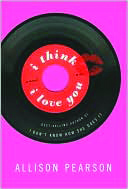Poor little Petra, just 13 and growing up in South Wales, is one of thousands of girls smitten with David Cassidy. The year is 1974, and Cassidy is the creation of a brilliant marketing campaign that preys on the hearts of teenage girls.
As you may or may not remember, depending on which planet you were born on, Cassidy was the star of the TV series “The Partridge Family.” He branched off into his own career as a bubble-gum rock icon.
Cassidy’s career fizzled and died in a series of media scandals, including a spread of him naked in Rolling Stone (photographed by Annie Leibovitz), admitted drug and alcohol problems and other grave disappointments to his fans.
Worst of all, in 1974, at a Cassidy concert in London’s White City Stadium, a 14-year-old girl named Bernadette Whelan was crushed to death and nearly 1,000 fans in the crowd of 35,000 were injured.
When the novel “I Think I Love You” opens, Petra and her friends are blissfully ignorant of these eventualities. They are too busy studying up on Cassidy — reading every little scrap, every magazine article — collecting posters and other paraphernalia and dreaming that they might one day become Mrs. Cassidy.
Petra is a chatterbox, and so we are privy to every flutter of her stolen heart. She aces all the Cassidy quizzes and so enters into a mega-contest. First prize — a trip to California to meet him in person.
Petra studies for the prize. Pores over every issue of the Essential David Cassidy Magazine. As for the boys her own age — hopeless, useless. And the girls — mean as ever.
“You chose the kind of friends you wanted because you hoped you could be like them and not like you. To improve your image, you made yourself more stupid and less kind.”
Who wouldn’t try to escape, if only in imagination? Petra writes letters to her true love and, lo!, she receives replies.
Little does she know that these replies are written by a would-be student of literature whose only hope of a salary lies with the firm that markets Cassidy. Yes, Bill is hired to write replies to the thousands of girls who bare their souls each day.
In this delightful, giddy novel, there can be no doubt that their lives will one day collide.
They meet twice. Once in 1974, when Bill is sent to the concert at White City Stadium, and again in 1998. Back in 1974, Petra was too disillusioned after White City to collect her prize. In 1998, she makes a drunken call to the magazine demanding the prize she won so many years ago — a trip to America to meet her childhood heartthrob.
What possesses Petra, now 38, to pick up the phone and demand her prize? Well, her mother’s death; her husband’s announcement that he wants a divorce; her own teenager, Molly, who has begun the excruciating rejection process known as individuation.
The magazine’s editors — including Bill, who has graduated to editorial director — in their infinite wisdom, sense a golden opportunity. They will fly the middle-aged woman to meet the aging superstar in Vegas. Imagine Petra’s surprise when she learns that Bill, who goes along for the ride, was the literary hand of David Cassidy.
It’s a fantastic, unbelievable plot, spun from the impossibility of celebrity adoration and the gorgeous naivete of young love.
Allison Pearson, whose novel “I Don’t Know How She Does It” sold more than 500,000 copies in 31 languages, is the master of the balancing act. Somewhere in all this frippery, she finds those universal chords, the stuff of great novels.
For example, what it means, as a girl, to search the world for clues upon which nothing less than one’s survival depends — what to wear, what to want, whom to trust. And the weight of one’s mother, the desire not to be one’s mother, the raw energy that makes a girl want to escape a world in which she cannot possibly ever be appreciated or fully realized.
Pearson is a very funny writer. She builds her characters through dialogue; her vernacular is fast and full of period wit, in this case the unhinged 1970s. She is also a reporter — this novel was born out of her experience interviewing Cassidy in 2004 for the Daily Telegraph. Like Petra, she was once a crazy fan. “I felt like a time traveler,” she writes in her afterword, which includes the transcript of her interview.
Copy the Story Link
Send questions/comments to the editors.



Success. Please wait for the page to reload. If the page does not reload within 5 seconds, please refresh the page.
Enter your email and password to access comments.
Hi, to comment on stories you must . This profile is in addition to your subscription and website login.
Already have a commenting profile? .
Invalid username/password.
Please check your email to confirm and complete your registration.
Only subscribers are eligible to post comments. Please subscribe or login first for digital access. Here’s why.
Use the form below to reset your password. When you've submitted your account email, we will send an email with a reset code.